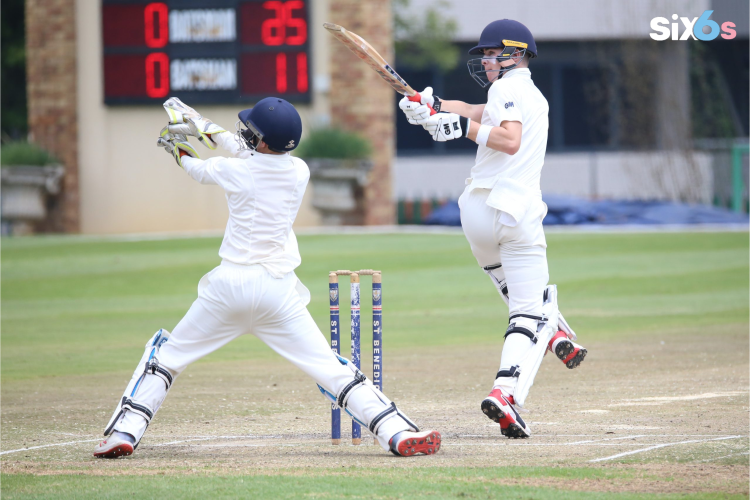Cricket often hailed as a game of strategy and skill thrives on the dynamic interplay between individual brilliance and cohesive team tactics. The sport’s landscape is adorned with moments where well-executed strategies have turned the tide of matches. In this article, we delve into the intricate realm of team tactics in cricket, exploring the strategic decisions, player roles, and collaborative efforts that shape the outcome of the game.
Introduction
Cricket is a symphony of individual talents harmonizing to achieve collective success. Behind every boundary scored and wicket taken lies a web of calculated decisions and collaborative maneuvers. This article peels back the layers of cricket strategy, revealing the synergy between tactical planning and on-field execution.
The Art of Batting and Bowling Tactics
Batting Partnerships – Forging Alliances on the Pitch
In the realm of batting, partnerships are the cornerstone of a team’s success. The interaction between batsmen at the crease involves a delicate balance of communication, understanding, and calculated risk-taking. The art of building partnerships rests on players’ ability to complement each other’s strengths, rotate the strike, and capitalize on scoring opportunities.
Bowling Combinations – Orchestrating Variations
On the other side of the coin, the bowling unit orchestrates an array of tactics to dismantle opposition lineups. The strategic deployment of fast bowlers, spinners, and variations creates a dynamic bowling combination. Spinners exploit the pitch’s conditions, fast bowlers target weaknesses, and variations keep batsmen guessing. Crafting a harmonious bowling attack is akin to composing a tactical symphony.
Fielding Precision and Strategy
Strategic Field Placements – Crafting Pressure Zones
Fielding in cricket is more than just stopping the ball; it’s about creating pressure through strategic placements. Captains and fielding coaches meticulously position fielders to exploit batsmen’s tendencies. Close-in fielders, slip cordons, and fielders on the boundary form a strategic network that guides the ball into high-pressure areas, inducing errors and creating wicket-taking opportunities.
Running Between Wickets – Navigating Smartly
Running between wickets might seem basic, but it’s a tactical aspect that often separates wins from losses. Batsmen adept at quick singles and turning ones into twos keep the scoreboard ticking and exert pressure on the fielding side. This strategy can force fielders into hurried throws and misfields, leading to valuable extra runs.
Strategic Player Roles and Captains’ Leadership
All-Rounders – The X-Factor Players
All-rounders are the Swiss Army knives of a cricket team, contributing with both bat and ball. Their presence provides captains with tactical flexibility. A well-timed introduction of an all-rounder can break partnerships, accelerate run-scoring, or bring stability to a batting collapse.
Captains’ Influence – Steering the Ship
The captain holds the helm of the team’s strategic ship. From setting fields and making bowling changes to deciding batting orders, the captain’s decisions directly impact the game’s ebb and flow. Effective captains blend tactical acumen with motivational leadership, guiding their teams through crucial phases.
Conclusion
Cricket strategy transcends individual brilliance, embracing the concept of unity in diversity. Team dynamics, strategic partnerships, and tactical ingenuity are the cornerstones of successful teams. As the sport continues to evolve, the marriage of strategy and execution will remain the fulcrum upon which cricket’s fate pivots.
FAQs
Q1. How important is player communication in executing team tactics?
A1. Player communication is paramount in executing team tactics. Clear communication ensures coordinated efforts and timely decisions on the field.
Q2. What role do analysts play in shaping team strategy?
A2. Analysts provide invaluable insights into opponents’ strengths and weaknesses, aiding captains and coaches in formulating effective strategies.
Q3. How do fielding positions vary between different formats of the game?
A3. Fielding positions are adjusted based on the format’s demands. T20 games often employ aggressive field placements to restrict runs, while Test matches focus on building pressure.
Q4. Can a well-executed strategic change turn the match’s outcome?
A4. Absolutely. Well-timed strategic changes, such as altering bowling options or adjusting field placements, can often shift the momentum and change the course of a match.
Q5. What qualities make a captain effective in implementing team tactics?
A5. An effective captain combines tactical acumen with a deep understanding of player strengths. Decisiveness, adaptability, and the ability to motivate the team are also crucial attributes.


